Hokkaido Guide Stories – Japan’s Far North
, by Tobaji
Adventure Hokkaido Guide Tobaji shares his adventures on our Japan’s Far North Hiking Tour to Rebun & Rishiri Islands.
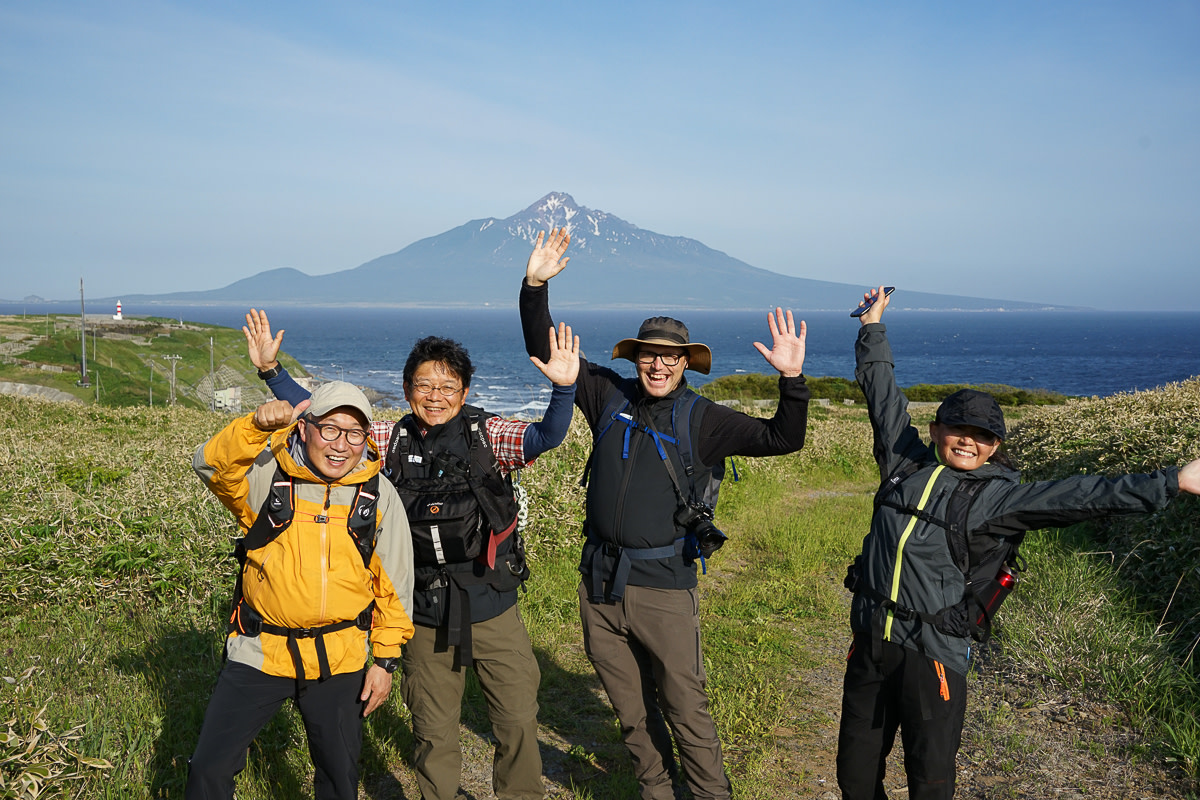
The island of Hokkaido can be considered the northern frontier of Japan. Similarly, the islands of Rebun and Rishiri are the northern frontier of Hokkaido. Closer to Russia than Tokyo, the islands are unique for their location, environment, and geology.
Rishiri is formed by a volcano that rises out of the sea and Rebun is shaped by volcanic uplift, ice age glaciers, and millennia of harsh winters. Both islands and the abundant waters around them are part of the Rishiri-Rebun-Sarobetsu National Park. They are also the stars of our Japan’s Far North 7 day Hiking Tour.
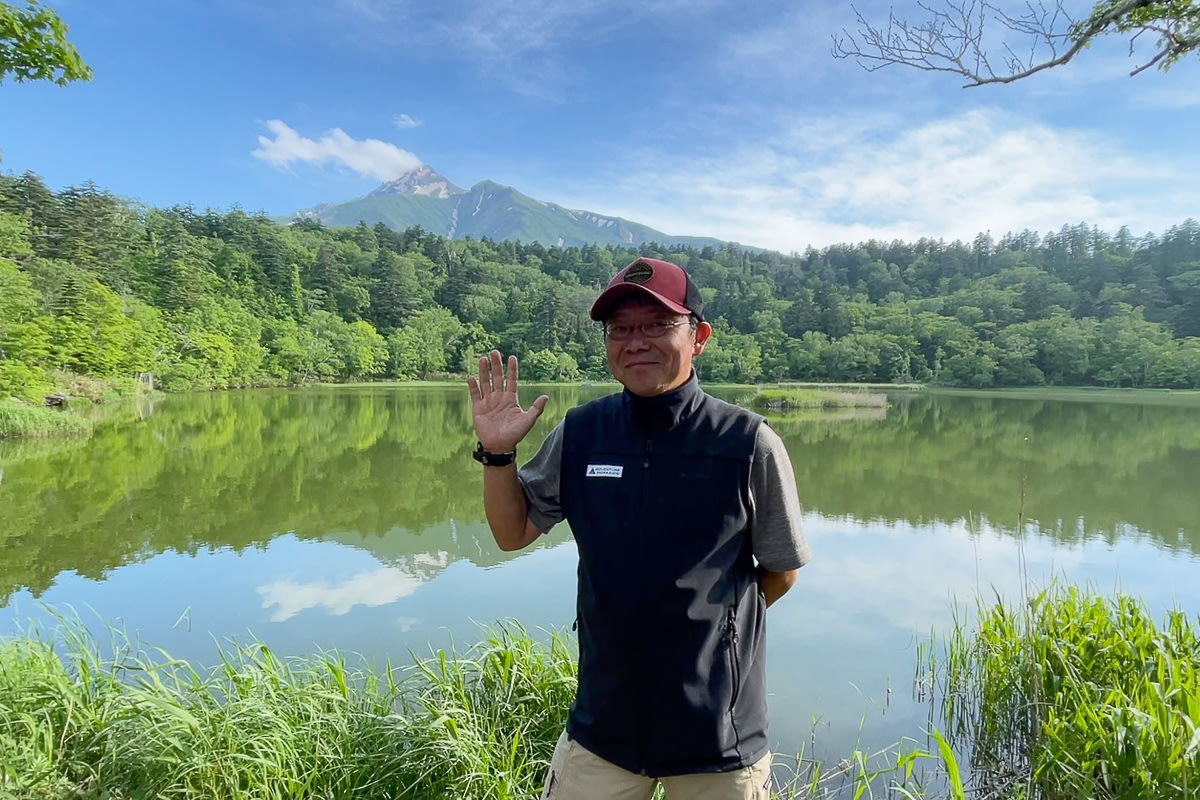
Konnichiwa, my name is Koichi Toba, but everyone calls me Tobaji. I am a guide with Adventure Hokkaido and I lead many of our tours to Rishiri and Rebun. The area is one of my favourite places in Hokkaido and I have come here every year since 2010. I often stay on Rishiri for a month at a time and the island feels like a home away from home.
I was excited to head over to the islands for the first time this year with fellow guides Ayaka and Richard from Adventure Hokkaido along. We planned to run through much of our Japan’s Far North 7 Day Hiking Tour itinerary and we were joined by Kikuchi-san and Ikeda-san from one of our partners, Hokkaido Treasure Island Travel.

I am particularly fond of the alpine flowers on Rebun. Nicknamed “The floating flower island,” alpine flowers grow on Rebun at coastal elevations. Some species are found nowhere else on earth.
The timing and location of the flowers differ year to year but I was hoping I could find them in my favourite spots. I was also looking forward to catching up with many of my guide friends who still live on the islands. Armed with packages of fresh coffee beans to deliver to my friends, we headed north.
Day 1: Wakkanai to Rebun Island
Our team assembled in the northern port city of Wakkanai, where the Russian road signage reminds you of how far north you are. Our first destination on the trip was Rebun, the furthest from the mainland of the two islands.
We boarded the mid-morning ferry and, despite the strong wind, I drifted off for a nap on the pleasantly calm 3-hour crossing. After an easy-going morning, we headed straight to lunch to get stuck into some local seafood.
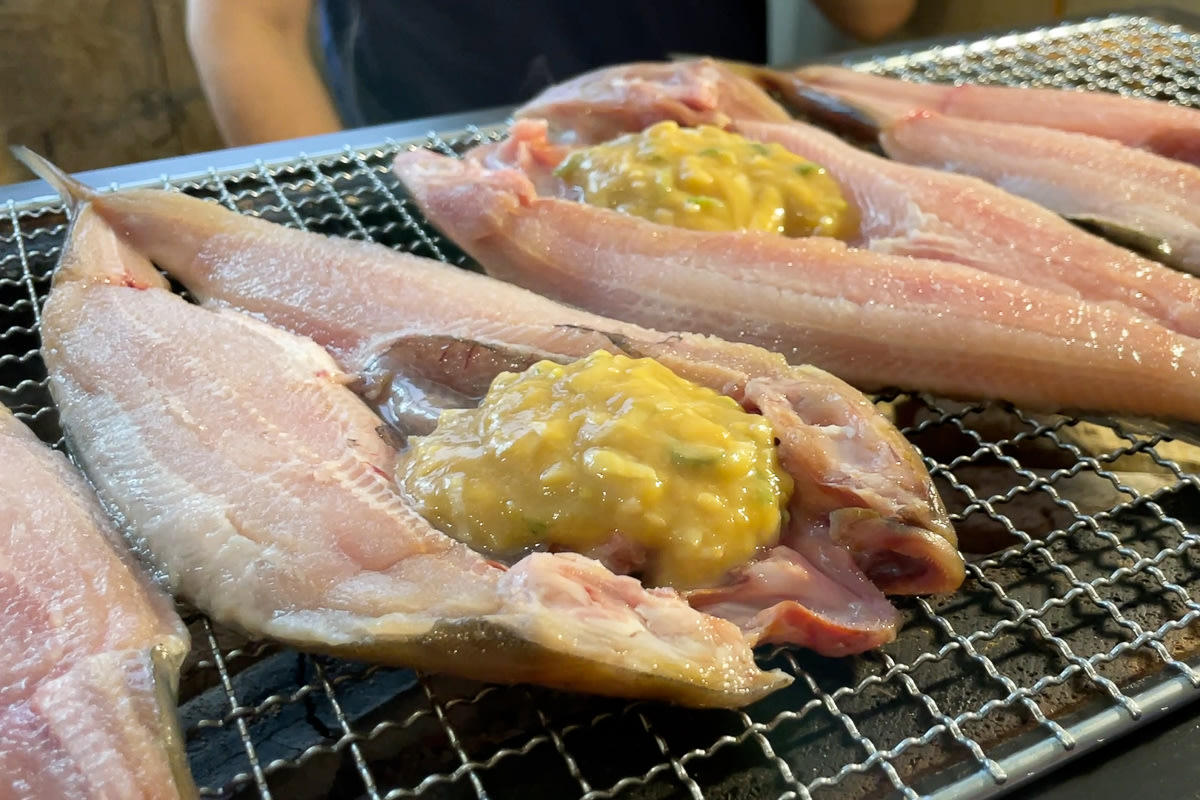
The rich waters around the islands produce some of the best seafood in Hokkaido. One of the local catches is hokke (Okhotsk Atka Mackerel), a white-fleshed fish dried and sold across Japan.
Traditionally made with salmon, chan chan yaki combines grilled fish and miso (fermented soybean) paste cooked over charcoal. The local restaurants can get hokke fresh from the sea and swap the salmon for an open fillet of hokke, a local specialty.
Walking out of the restaurant with a belly full of fresh fish and still smelling the charcoal barbeque I felt very happy to be back on the islands.
Hiking on Rebun Island – The Momoiwa Trail
A good introduction to Rebun’s rugged coastline, The Momoiwa trail traverses along the cliffs on the southwestern coast of the island. After a short climb up to the clifftop, we were rewarded with the first breathtaking view of the trip.
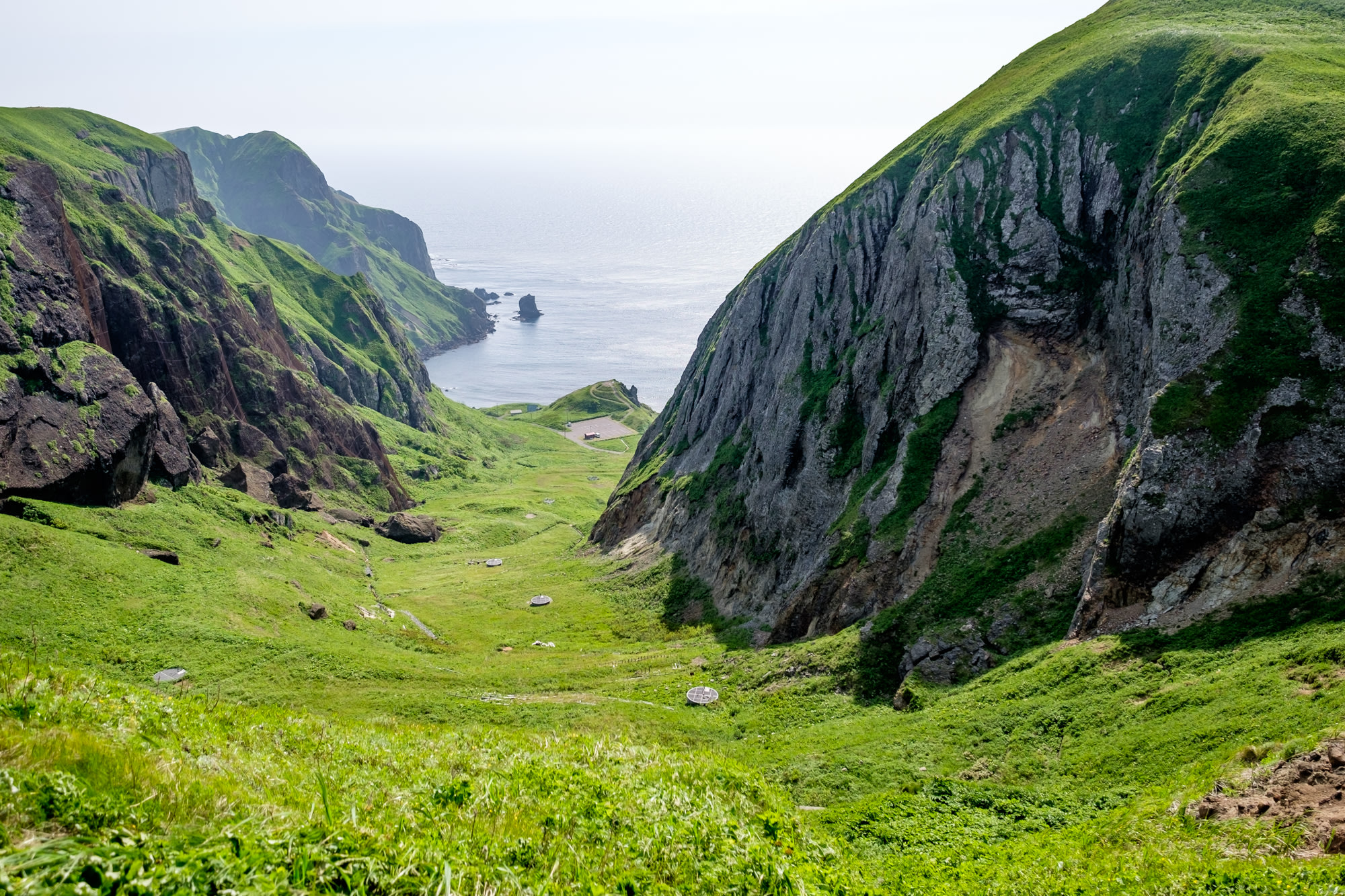
The wind was still strong and Momoiwa (which translates as Peach Rock) formed a wind tunnel and as I peeked over the edge it felt like looking into a jet engine.
This wind is bitter in winter and I find it always amazes me that anything grows along these cliffs. As we continued on the trail we found many hardy flowers perched on the precipice, including Rebun lady’s slipper orchids.
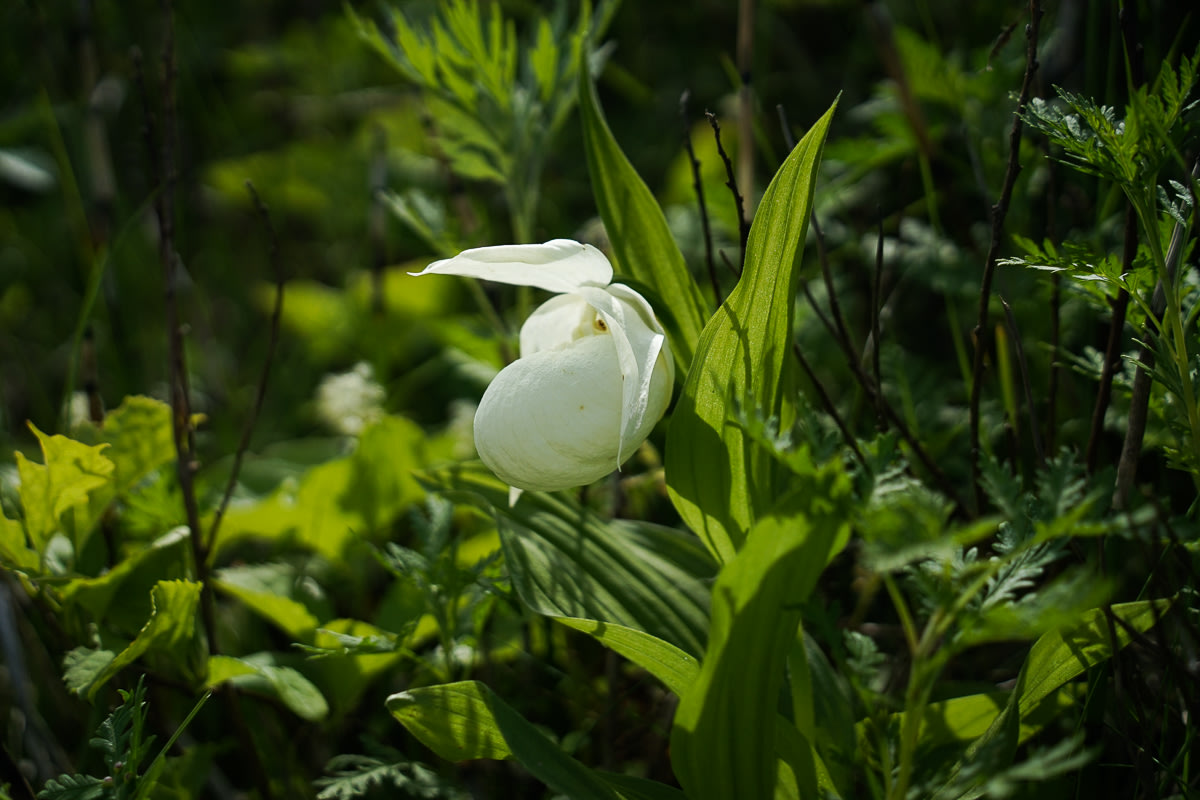
Rebun lady’s slipper orchids (Rebun Atsumorisou) are a small cream-colored orchid unique to Rebun Island in Hokkaido. Popular with flower lovers, they were picked to the point of near extinction and now mainly grow in the north of the island.
I know a few spots along the Momoiwa trail where they survive and as I searched towards the cliff edge I was thrilled to find a cluster of cream petals at the peak of their bloom.
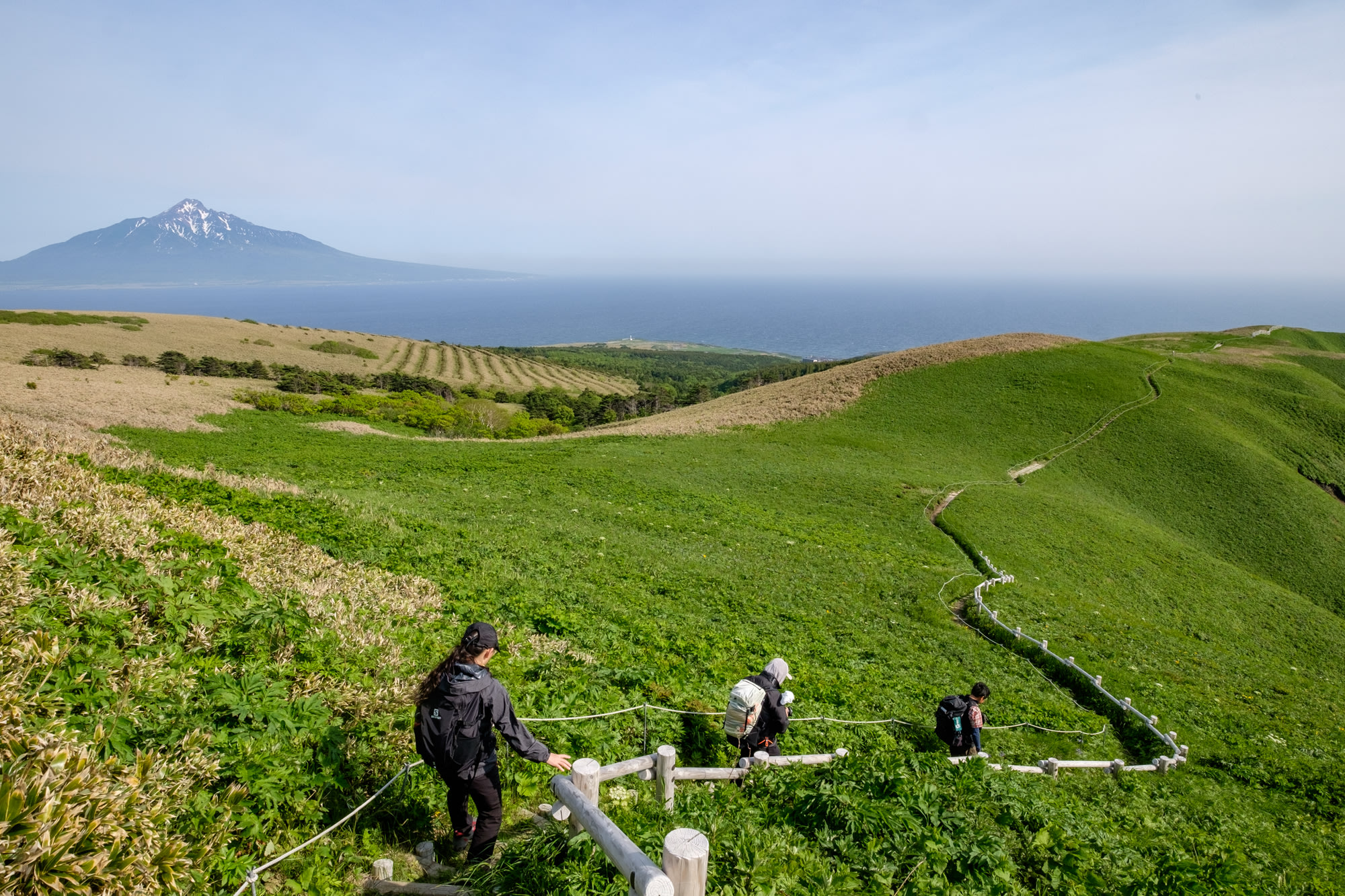
Day 2: Misaki Meguri hiking and over to Rishiri Island
We would usually have the whole day to complete the 12km hike from the north tip of Rishiri. However, the off-season ferry schedule meant we had to head to Rishiri early.
After a quick breakfast, we hustled to the trailhead early to walk as much of the trail as possible before catching our afternoon ferry.
Hiking on Reburn Island – Misaki Meguri trail
We started our hike at Cape Sukoton at the north end of the island. Once considered the northernmost point of Japan, more accurate measurements saw it knocked off the top spot by Cape Soya on the Hokkaido mainland. It still seemed like a fitting spot for a group photo.
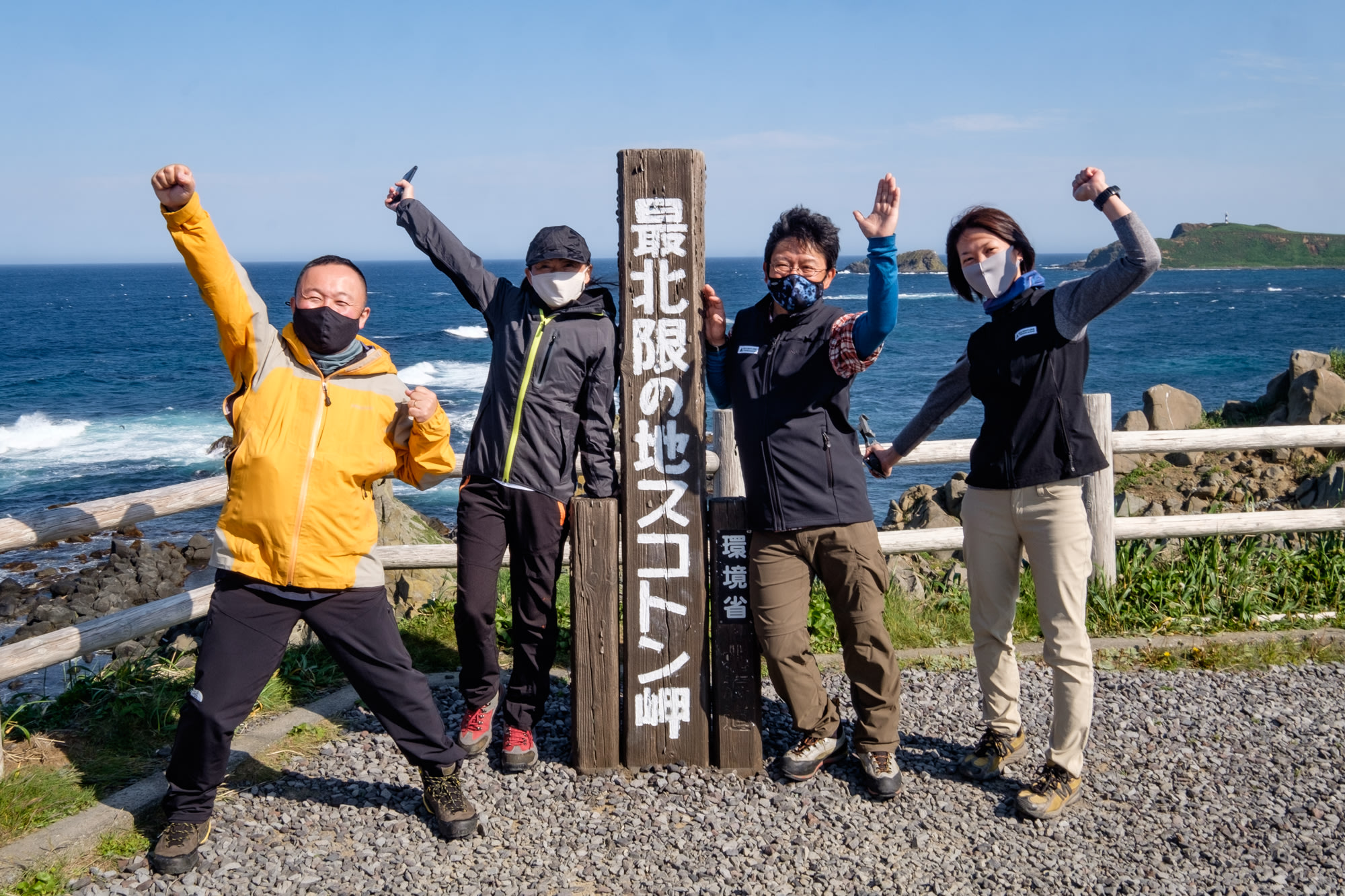
Looking back from the first climb, I noticed the sea beneath us was accented by a white band along the shore. There is no sand on the beach so it took a second to click. The water was full of white herring eggs churned up by the waves and highlighting the contours of the bay!
Topping out on the day’s high point with legs already burning the rest of our hike stretched away beneath us. Cue another group photo.
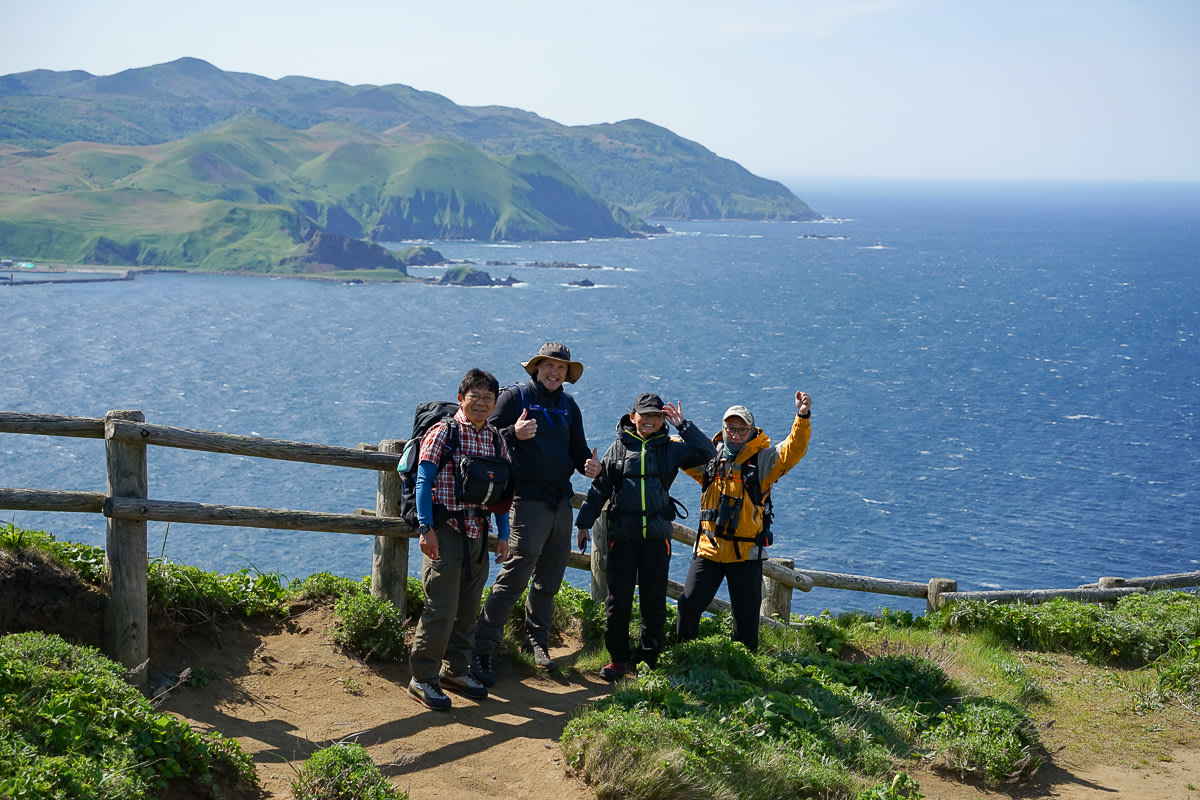
After a windy descent down to the beach, Kikuchi-san said it felt more like skydiving, we had just set off down the path when two huge white tailed eagles took flight from behind the dunes. We paused for a moment to watch these awe-inspiring creatures cut gracefully through the sky.
While Rebun is more famous for flowers, the wildlife doesn’t disappoint either.
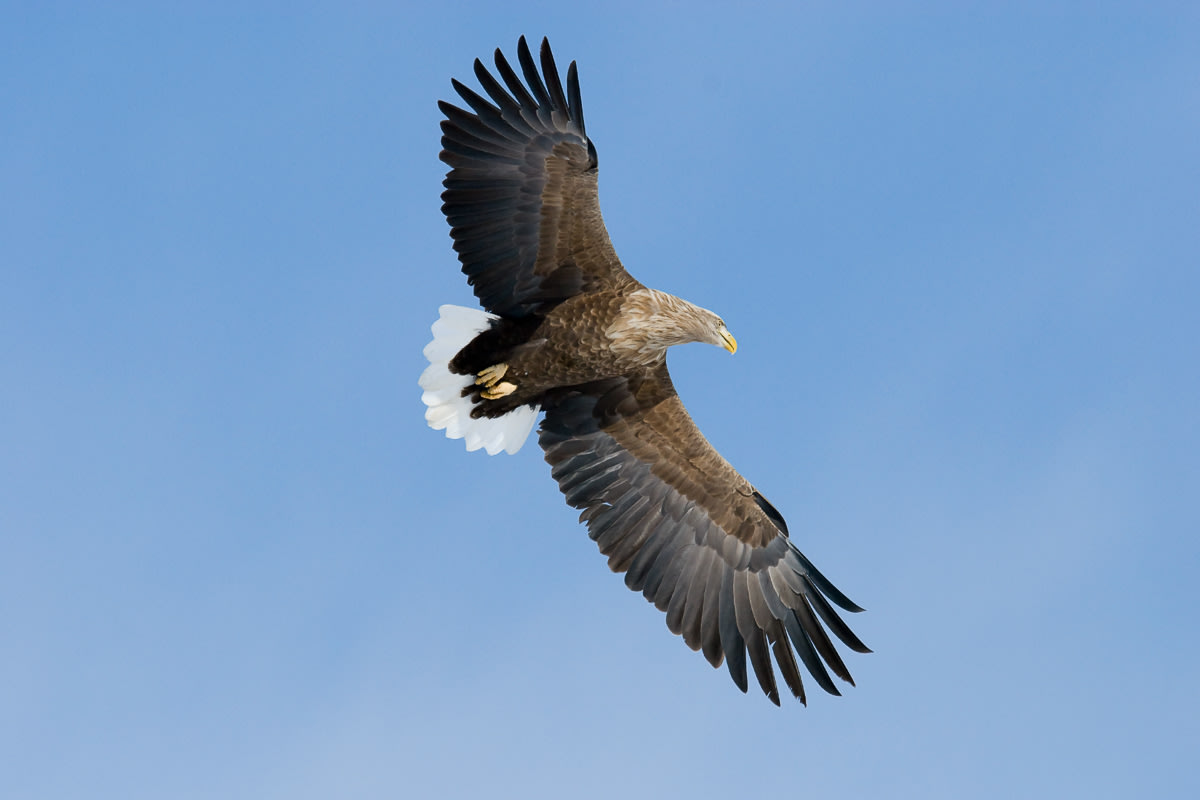
As we continued along the shore, a friendly local wildlife patroller eagerly waved us over and led us into the dunes, where more wild orchids were flowering hidden from view. Another entry for my list of Atsumorisou spots.
Cresting the last climb we descended to the last viewpoint in good time. With time to spare before the ferry, we detoured in search of seals on the way back to the port.
I directed us to a spot where a couple of seals sometimes sunbathe. I couldn’t believe it as we rounded the corner and found dozens of chubby seals laid out on the rocks sheltering from the wind less than 100m from shore.
As I tucked into lunch, watching the older seals laze in the sun indifferent to their audience, I wondered if these were the same seals I’d first seen as youngsters playing amongst the rocky shoreline 10 years ago.

Arriving on Rishiri Island
Our time on Rebun felt all too brief as we hopped on the ferry to neighbouring Rishiri. The island’s landscape is dominated by Mount Rishiri, also known as Rishiri Fuji, a dormant volcano in the middle of the island with a shape similar to Mount Fuji. The peak defines the island and Rishiri and Rebun feel different despite being separated by less than 10km.
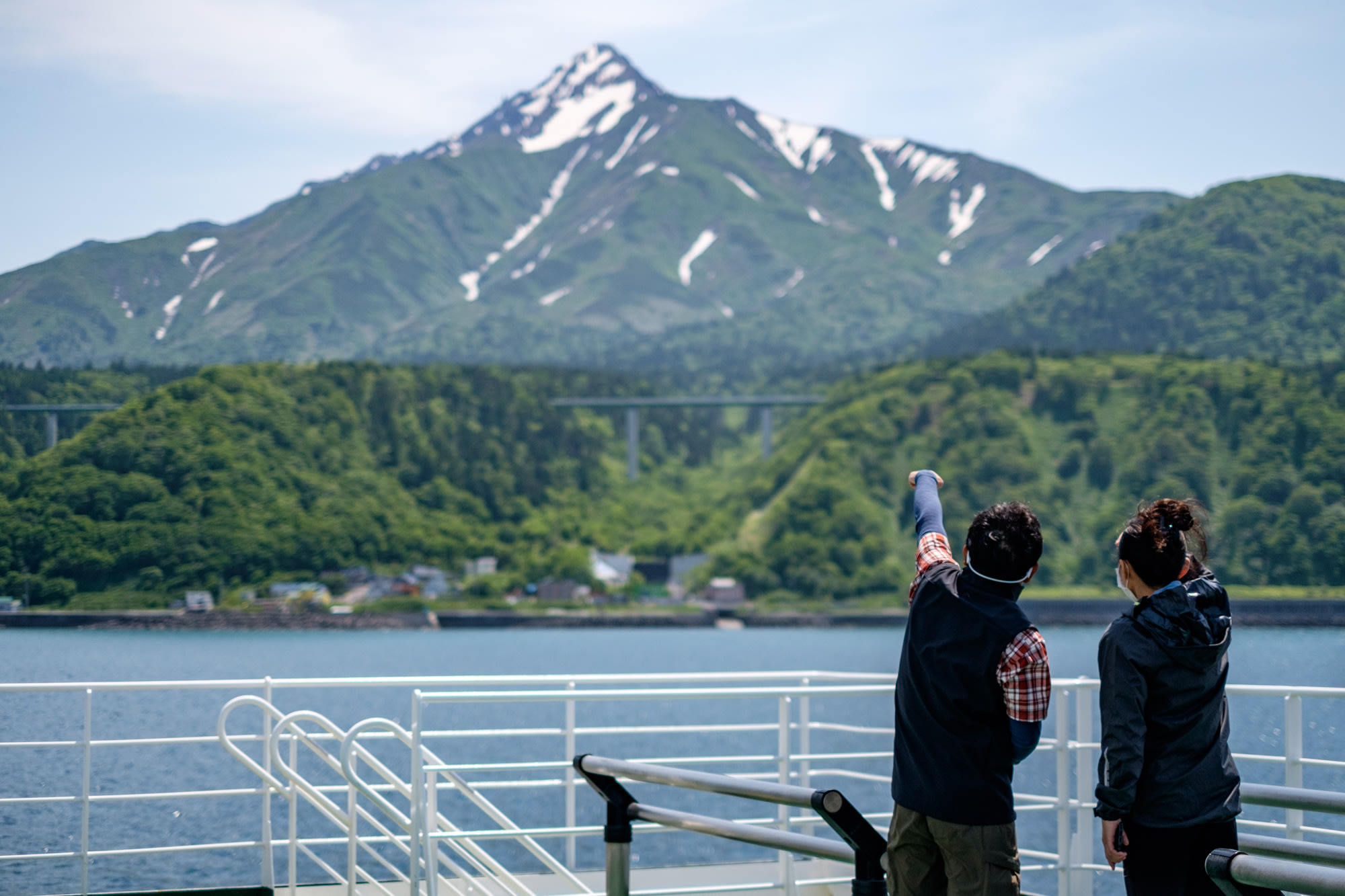
With a free afternoon, we decided to hike the bottom section of the summit trail, which we would skip on summit day.
Relieved to be out of the wind, we climbed through primeval forest finishing at one of the many natural springs on the island. Bottled and sold on the island, it was satisfying to enjoy nomihodai (all you can drink) mineral-rich water straight from the source. The same spring water rises under the sea feeding the marine life around the island.
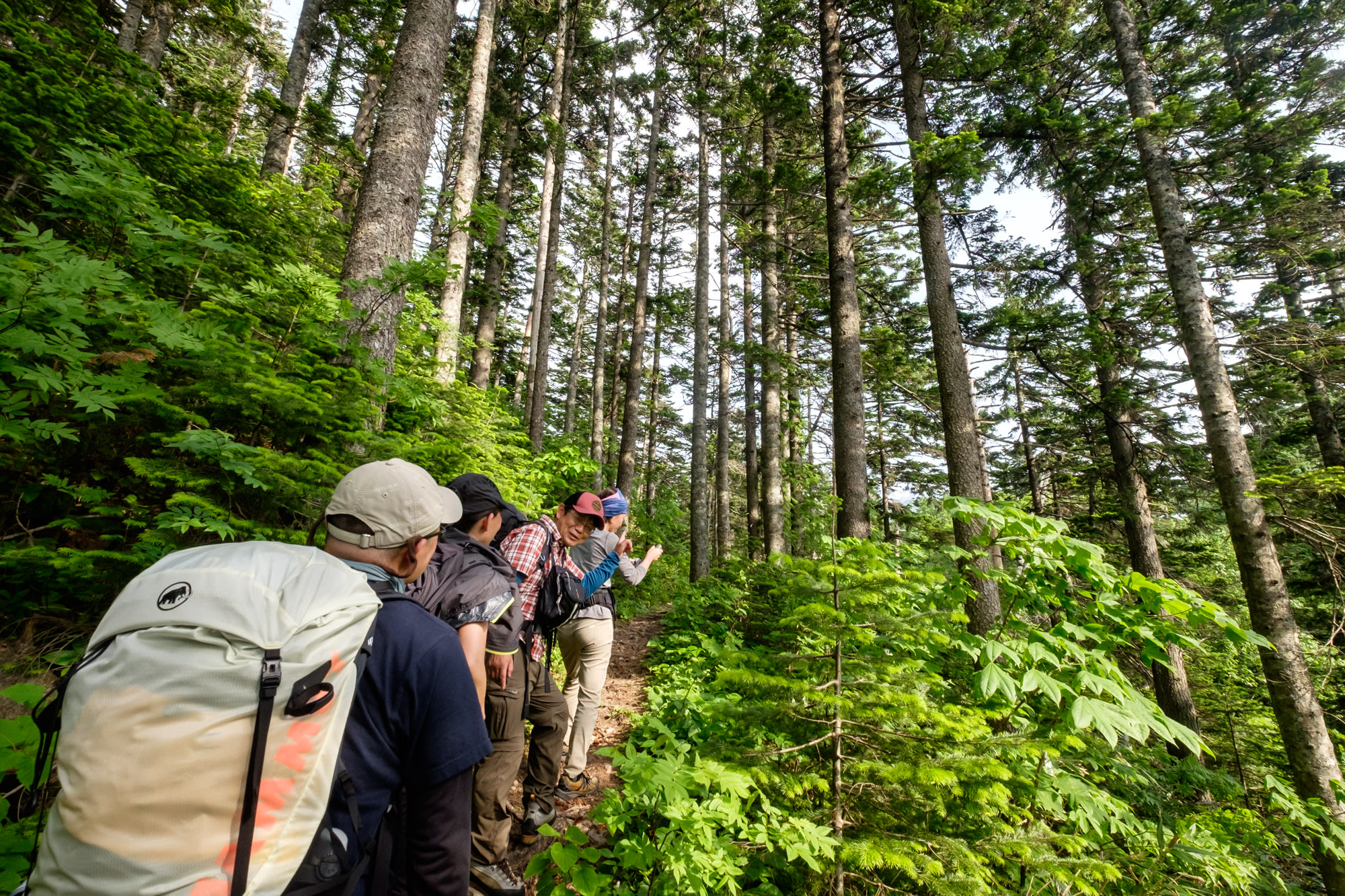
Day 3: Hiking on Rishiri Island
Surrounded by nothing but the ocean, Mount Rishiri is exposed to the full force of the weather. Awaking to strong winds and threatening clouds I knew it was unsafe to aim for the summit.
Upon delivering the news, I was glad the group was still keen to explore the lower section of the trail. Just as we pulled into the car park the heavens opened but we pushed on, knowing we had an Onsen (hot-spring) to return to.
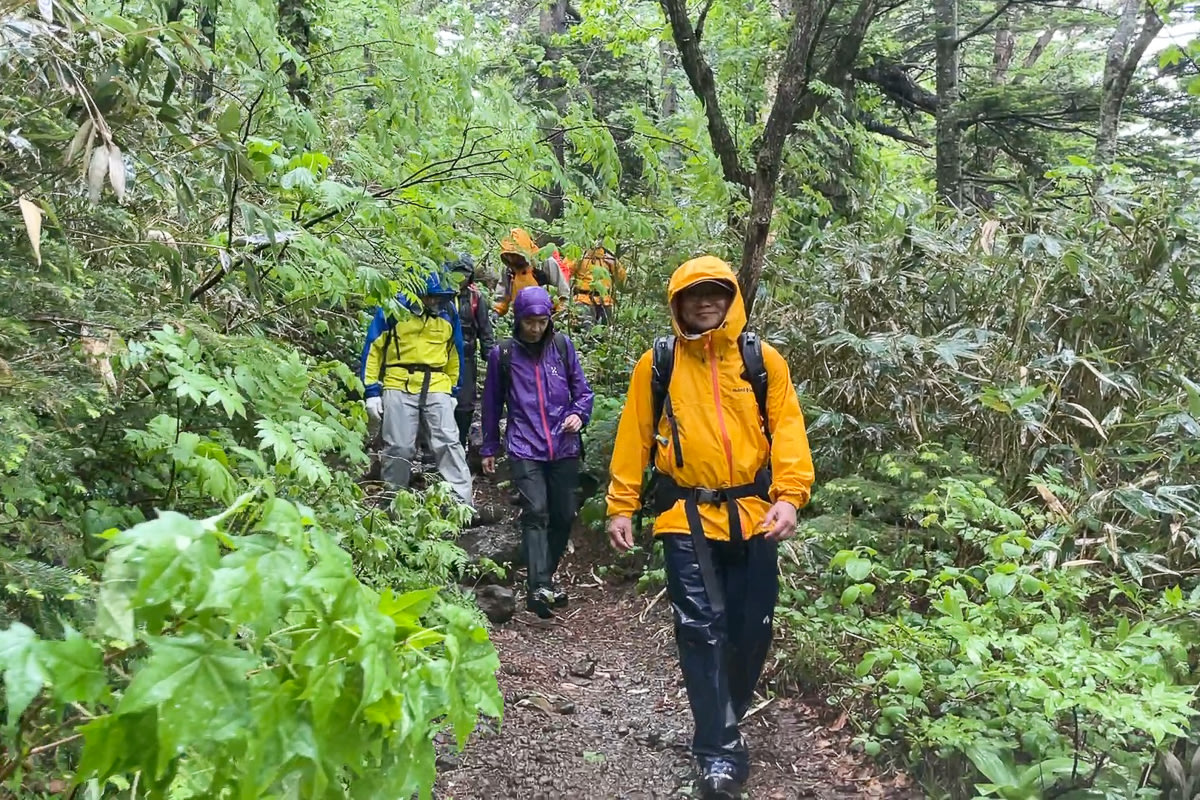
We started our hike from where we finished yesterday and the trail climbed gently through the coniferous forest. The trees are home to woodpeckers and as we listened for their distinct tap-tap-tapping the forest was silent bar the dripping of rain off leaves and trickling streams.
While many people stay at home on wet days, we had the trail to ourselves, I find that the rain brings the colors, smells, and sounds of the forest to life.
The treeline is low on Mount Rishiri. By the 5th station at 600m, the tree cover was thinning and the wind was driving the rain sideways.
Suitably soaked and feeling the wild energy of the mountain, we called it a day and made our way down for a well-earnt hot spring soak in the local onsen at the foot of the mountain.
I was rewarming my body and soothing my legs in the outdoor bath (rotenburo) when the silence was broken by a tap-tap-tap. A woodpecker at work in the trees around the pool, magic!

For dinner, we headed to a restaurant that a local guide friend of mine had recently opened, Rishiri 1721, and enjoyed a feast featuring local scallops, chan chan-yaki using hokke that the owner caught himself and fresh kombu seaweed to grill.
It was my first chance to eat at my friend’s restaurant and I’m proud of what he has made. Call me biased but his chan chan-yaki is the best you’ll find on the islands!
Day 4: Sea Kayaking on Rishiri Island
While Kayaking is not part of our usual itinerary here, a local guide friend of mine, Toshiya, runs kayak fishing trips on the crystal clear waters around the island. We woke to clear skies and while the wind was still strong a quick call to Toshiya confirmed that the waves had dropped enough to head out onto the water so we figured we would take to the sea.
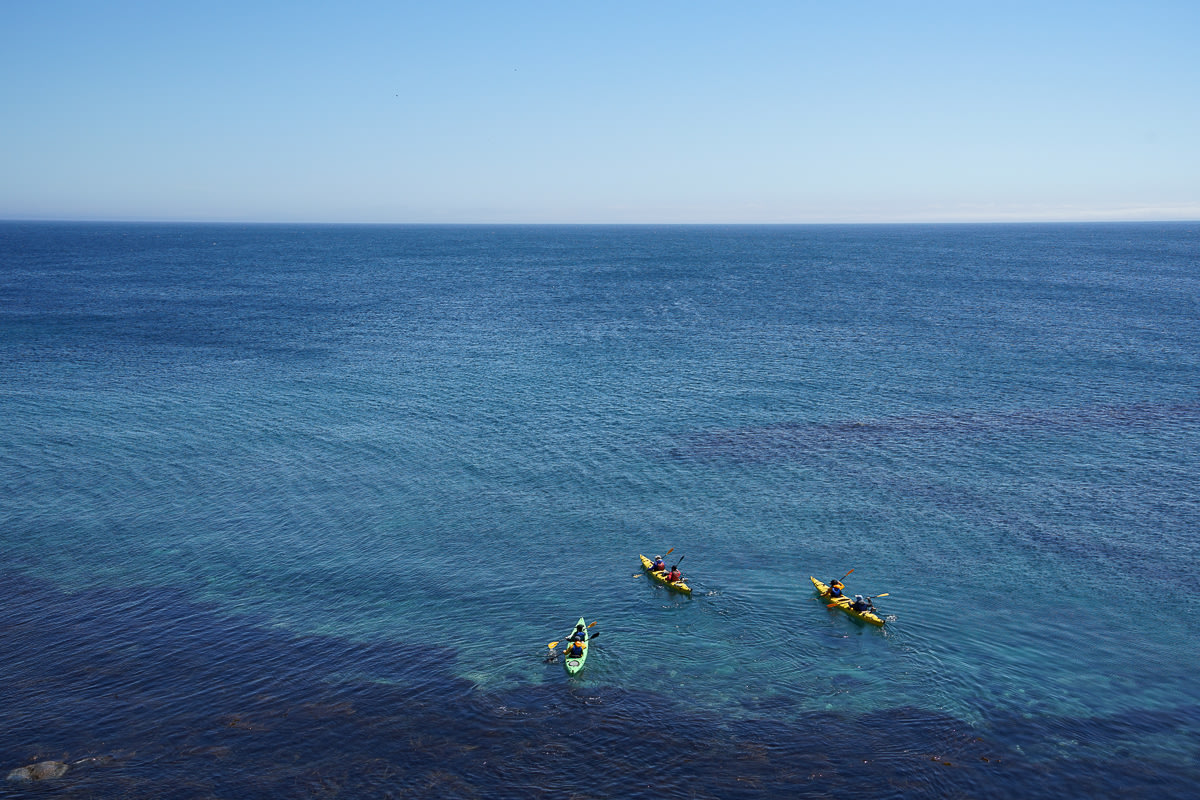
Toshiya was born and raised on Rishiri and after spending some time further south he is now back on the island. He is an outdoor lover and the collection of equipment, from surfboards to skis, by his front door show how he enjoys all aspects of island life.
After a quick briefing, we paired up and launched through the waves on double kayaks into a sheltered bay. The water around Rishiri is prime for kombu kelp and the seaweed is harvested locally and sold around the world. Toshiya explained that the kombu in the shallows of the bay was still young, a year from harvesting, but it still looked like it would taste great on a barbecue.
Our kayaks were equipped with fishing rods and while the wind proved challenging, we managed to catch a few Gaya (White-edged rockfish) for dinner. Having had an easy paddle downwind no one was looking forwards to the paddle back to shore. But with coordinated timing, the kayaks cut satisfyingly through the chop and we were ashore in no time.
If you have some free time after your tour here, I highly recommend adding Kayaking to your island adventure and experience the waters around the island, which are such a big part of island life.
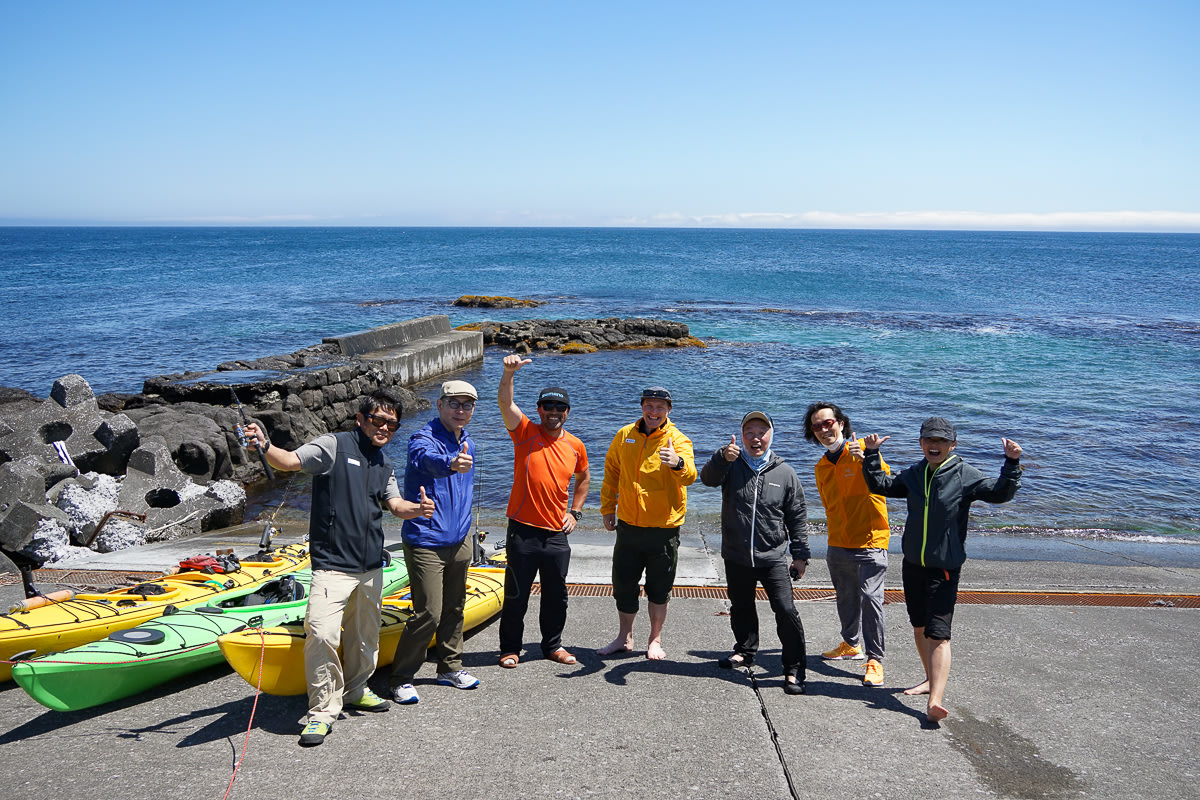
Minamihama Marsh Walking
After making it back to dry land Toshiya headed off for a surf and we drove around to the south side of the island to check out the Minamihama Marsh, with the smell of sea salt still lingering in my nose.
Having been formed by a violent steam explosion as magma mixed with sea water. The caldera now shelters various plant life, from cranberries to 100+ year old Akaezomatsu (Sakhalin spruce). It was a nice way to wind down the tour with an easy circuit around the boardwalk.
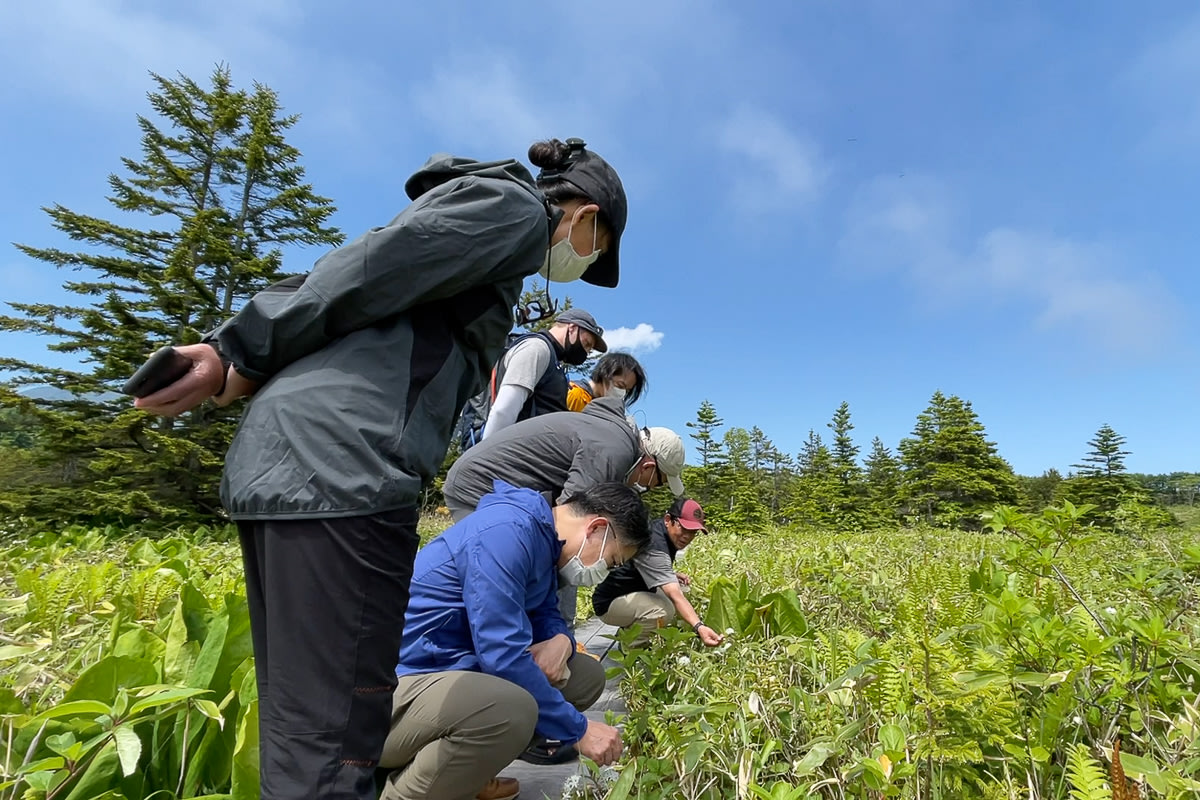
Half of our group had to head to the airport to fly home and we bid them farewell, watching the plane loop around the mountain, and headed back to our accommodation to relax.
Knowing we wouldn’t top the seafood feast from last night, we decided to spice it up and go to the local Chinese restaurant. The solo chef, who handled everything from orders to serving, cooked some of the best Chinese food I have had. These islands never cease to surprise.
Day 5: Ferry back to Wakkanai
Our last day was a travel day. I managed to deliver my last coffee package and pick up my favourite vinegar octopus snack from the local store, before boarding the ferry and bidding farewell to the islands.
No matter how many times I come to Rebun and Rishiri, I’m always struck by how they feel both familiar and unique at the same time. Alpine flowers that I can see in the mountains are flowering by the coast. The ever-present Mount Rishiri; shaped like Mount Fuji but surrounded by the sea. Scallops, hokke, and kombu prepared in ways only possible due to how fresh they are.
These are the things that keep me coming back to these islands, as well as catching up with all the good friends I have made here.
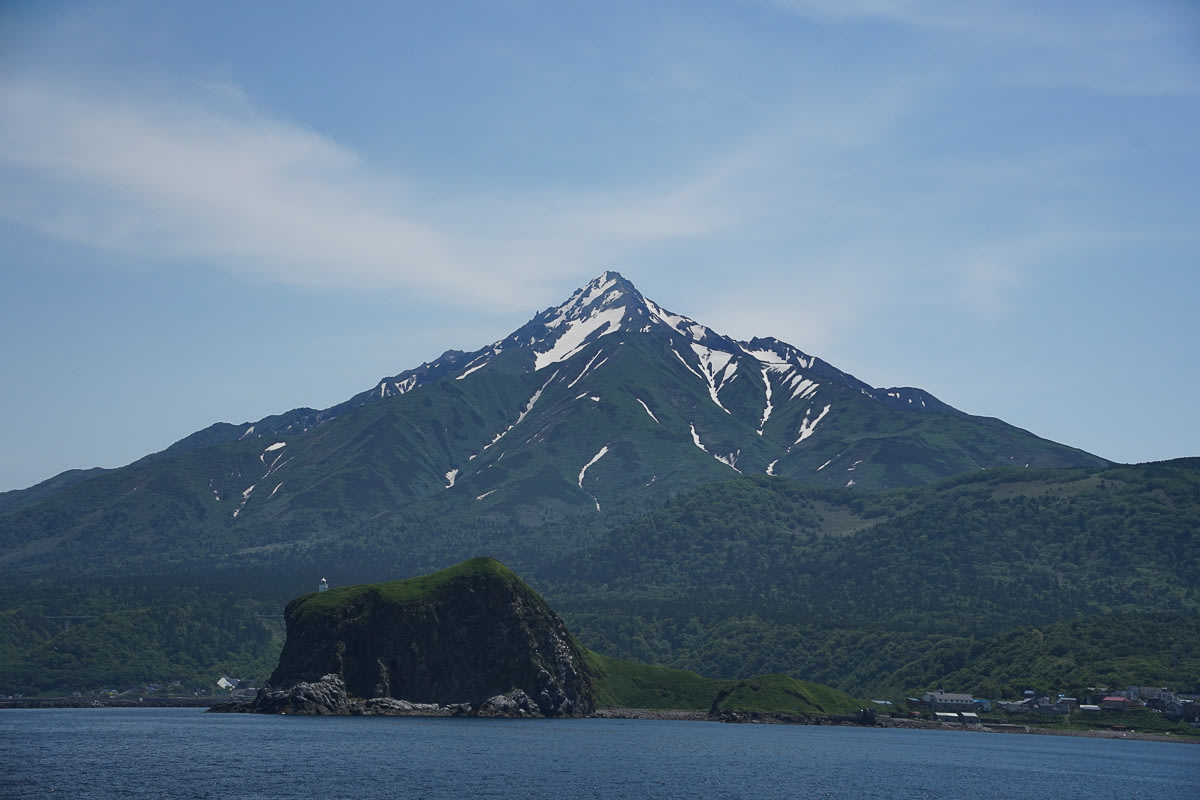
Visiting Hokkaido? Go North!
I hope this travel diary has whetted your appetite for what you can see and do on a hiking trip to Japan’s far north. The islands of Rishiri and Rebun pack a lot of adventure into their small area. For some more inspiration, check out our photo gallery from the trip.
Using our local knowledge and connections, our Japan’s Far North 7 Day Hiking Tour is designed to give you a taste of the landscape, flora and fauna, and local community that makes this northern frontier unique.
Hopefully, you will also discover the same magic that keeps me coming back.
Explore Rebun & Rishiri Islands
Japan’s Far North 7-day Hiking Tour